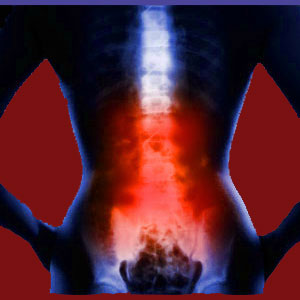
Facet joint pain walking is a rare form of symptomology, since walking does not stress the range of motion of affected vertebrae. However, it is possible to experience exacerbated pain when walking for some specific types of lumbar and cervical facet syndrome conditions.
Walking is an innocuous activity that is required for so many of life’s activities and responsibilities. When patients cannot walk comfortably, their physical functionality is greatly curtailed and their work prospects diminish, as well. Fortunately, when facet joint pain is associated with walking, it is usually minor and can be managed using conservative modalities, although some select examples might require more aggressive measures of treatment.
This article explores why walking might escalate facet syndrome symptoms. We will detail examples in the cervical and lumbar spinal regions and provide some tips for patients who find that their discomfort increases when they walk.
Cervical Facet Joint Pain Walking
Cervical facet joint pain is far less commonly aggravated by walking. The neck is not involved in the action of ambulation, but in some rare instances, pain might increase due to poor posture or mechanics of movement which may affect the C-spine.
Cervical spinal facet syndrome usually becomes aggravated after long periods of standing or walking, once the muscles fatigue and the patients begins to show deterioration in posture and ergonomics of motion. It is very rare for patients to express escalated cervical facet joint symptoms from normal amounts of standing or walking and almost unheard of for patients to experience immediate pain upon beginning walking.
Lumbar Facet Syndrome When Walking
The lumbar spine is more engaged with the mechanics of walking and therefore lower lumbar facet syndrome might suffer exacerbation of pain when the person ambulates. Most pain will be manageable and might lessen as walking continues. A minority of patients will suffer more intense pain the longer they walk. A few patients might suffer immediate pain upon walking or even standing, while some will report very severe symptoms due to variable amounts of walking.
Posture exercises and physical therapy can often help to minimize the effects of lumbar facet joint pain when ambulating. Most cases can be treated effectively enough to allow the patient to enjoy semi-normal to normal degrees of freedom when walking with only minor symptomology. Less commonly, the patient will not be comfortable walking at all or suffers markedly escalated pain after a short time frame and might be forced to consider more aggressive therapeutic interventions, such as drugs, injections or even surgery.
Help for Facet Joint Pain Walking
Patients should not panic if they suffer pain when walking. Instead, they should attempt to evaluate when they have pain and under what circumstances. The more information they can discover, the more they can help their physical therapist in managing the condition effectively and conservatively. Be sure to note which positions and actions incite pain, as well as how long you can stand or walk before the pain begins. Take into consideration the material of the floor and whether pain is worse or better when wearing shoes.
As noted throughout this website, most facet syndrome consists of mild to moderate degrees of pain and walking-related symptomology is no exception to this rule. While some rare severe and extreme pain profiles can occur, they are uncommon and might indicate misdiagnosis of the facet joints as the true symptomatic source.
Finally, walking with good posture should not place a strain on the vertebral column or warrant excessive movement from most of the spine. However, some factors might negate this truth, such as being pregnant, being obese, suffering from osteoporosis or some other problematic spinal or general health issue. Be sure to take these factors into account and make your physical therapist aware of such potential contributors to your painful expression.
Facet Joint Pain > Facet Joint Facts > Facet Joint Pain Walking





